Osteoporosis Risk Chart calculates a person's risk for
osteoporosis. It also predicts if the person requires a special X-ray test called 'bone densitometry or DEXA scan' to confirm the score index from the results of the chart.
We recommend that you take this test after the age of 40 years. Please answer all the questions. The test is almost 80% accurate in predicting osteoporosis.
Generally as we age, the
risk of osteoporosis increases and this results in increased risk of fracture such as fracture of the hip bone or wrist bone. The good news is that osteoporosis is reversible by exposure to sunlight and taking
Calcium and Vitamin D supplements.
What is Osteoporosis?
Osteoporosis is defined as low bone mineral density caused by altered bone microstructure, which predisposes patients to low-impact, fragility fractures. These fractures significantly decrease the quality of life, increasing morbidity, mortality, and disability (1✔).
Who is at Risk for Osteoporosis?
Bone loss naturally occurs with increasing age and declining sex hormones, leading to a loss of bone mineral density and increased fracture risk.
Several factors contribute to osteoporosis, including:
- Advanced Age: Aging is a significant osteoporosis age risk factor
- Low Body Weight (<128 pounds)
- Female Gender: Osteoporosis risk factors in women include hormonal changes like menopause
- Family History of osteoporosis
- Smoking: Smoking and osteoporosis are closely linked, as smoking accelerates bone loss from smoking
- Alcohol Consumption: Alcohol and osteoporosis impair bone health and calcium absorption
- Low Physical Activity
- Early Menopause
- Corticosteroid Use
- Secondary Osteoporosis: Caused by diseases or medications.
- Prior Fractures after age 40 from minor trauma
- Osteoporosis modifiable risk factors include quitting smoking, reducing alcohol intake, and improving physical activity to lower risk factors for broken bones
- Obesity may sometimes increase bone density, but it is still an osteoporosis obesity risk factor due to poor bone quality
Women and Osteoporosis Risk
Over 50% of postmenopausal white women will experience osteoporosis-related fractures, while white men face a 20% lifetime risk.
However, in men, the one-year mortality rate after a hip fracture is twice that of women. Black men and women have lower rates of osteoporosis compared to white individuals, but once diagnosed, their fracture risk is similar.
Amenorrhea lasting over a year, often caused by low estrogen, low body weight, or excessive exercise, can lead to rapid bone loss. This highlights the importance of hormonal balance and maintaining a healthy weight to preserve bone density and reduce fracture risk (
2✔).
Symptoms and Stages of Osteoporosis
Osteoporosis is often called the "silent disease" because symptoms may not appear until a fracture occurs. Common symptoms include:
- Back Pain: Often caused by vertebral fractures
- Loss of Height: Gradual height reduction due to spinal compression
- Stooped Posture: Known as kyphosis or “dowager’s hump.”
- Fragile Bones: Increased susceptibility to fractures, even from low-impact falls
Stages of Osteoporosis
Osteoporosis progresses through four stages, weakening bones over time and increasing fracture risk. Early stages often show no symptoms (
3✔).
Stage 1:- Bone loss and formation occur at the same rate
- New bone does not outpace bone loss
- No symptoms are present
Stage 2 (Osteopenia):- Bone loss exceeds bone formation, leading to lower bone density
- No symptoms, but bones are weaker
- Risk of developing osteoporosis can be reduced with lifestyle changes
Stage 3:- Diagnosed as osteoporosis
- Bone loss accelerates, increasing fracture risk
- Minor falls may cause fractures
Stage 4:- Severe osteoporosis with a high risk of fractures
- Symptoms are Height loss, Stooped posture
Tests for Osteoporosis
Bone Density Test
Bone mineral density (BMD) testing is essential in diagnosing osteoporosis, with primary osteoporosis primarily related to aging, and secondary osteoporosis resulting from specific conditions that may be reversible.
The dual energy X-ray absorptiometry (DXA) is the preferred method for measuring bone density, and it provides important metrics for assessing fracture risk.
A typical bone density chart shows how bone mass changes with age. For healthy adults, bone density peaks in the early 30s and begins to decline with age, accelerating especially in women post-menopause.
FRAX Assessment: Fracture Risk Evaluation
FRAX is a clinically used tool that helps assess a person's 10-year probability of experiencing a major osteoporotic fracture (such as hip, spine, forearm, or shoulder fractures) and specifically a hip fracture. It was developed by the World Health Organization (WHO) to assist clinicians in determining whether further diagnostic testing or treatment is needed for osteoporosis prevention(
4✔,
5✔).
Difference between FRAX and DXA Tool
FRAX (Fracture Risk Assessment Tool) - Estimates 10-year fracture risk using clinical risk factors, not bone density (BMD)
- Cost-effective for determining when to perform a DXA scan or start treatment
- Considers factors like age, smoking, and alcohol use, offering a comprehensive fracture risk assessment
DXA (Dual-Energy X-Ray Absorptiometry)- Measures BMD directly at the hip or spine, diagnosing osteoporosis accurate
- Expensive but precise for bone strength evaluation and fracture detection
- Often combined with FRAX for better fracture risk prediction and treatment planning
Bone Density and Osteoporosis Risk Chart
| Age | Bone Density (T-Score Range) | Risk Category |
| 20-30 | +1.0 to -1.0 | Normal |
| 30-40 | -1.0 to -1.5 | Osteopenia |
| 40-50 | -1.0 to -2.0 | Osteopenia |
| 50-60 | -1.5 to -2.5 | Osteopenia/osteoporosis |
| 60-70 | -2.5 or below | Osteoporosis |
| 70+ | -2.5 or below with fractures | Severe Osteoporosis |
(
6✔)
Treatment of Osteoporosis
- Osteoporosis treatment focuses on lifestyle changes, medications, and fracture prevention
- Patients should be encouraged to engage in weight-bearing activities, improve balance through exercises like yoga, and quit smoking and alcohol
- Calcium and vitamin D3 supplementation is essential, with vitamin D levels normalized in deficient patients
- For treatment, bisphosphonates (alendronate, risedronate, zoledronic acid) are commonly prescribed as first-line therapy, reducing fracture risk by up to 70%
- Denosumab, selective estrogen receptor modulators, and anabolic agents like teriparatide may also be used. Hormonal replacement therapy is an option for some women
- Treatment is often guided by a T-score of -2.5 or lower, and in cases of fragility fractures, therapy is recommended without further testing
- Regular monitoring is necessary, especially after long-term use of bisphosphonates, to prevent complications such as atypical femur fractures
- Proper osteoporosis prevention and careful management of medications, including proton pump inhibitors, are critical
Osteoporosis Facts and Figures
| ❖ | Osteoporosis is a major public health concern worldwide and affects an estimated 200 million people. |
| ❖ | Osteoporosis has no symptoms but is responsible for over 80% of all fractures in people who are over the age of 50 years. |
| ❖ | Osteoporosis makes the bones more fragile and the fractures occur most commonly in the vertebral column, rib, hip and wrist. |
| ❖ | Fractures due to osteoporosis are more common than heart attack, stroke and breast cancer combined. |
| ❖ | Thirty seven per cent of men and 28% of women who sustain a hip fracture will die within a year. |
| ❖ | Both men and women start losing one percent of their bone mass after the age of 35. |
| ❖ | Hip fractures due to osteoporosis consume more hospital bed days than stroke, diabetes, or heart attack in some of the developed countries. |
| ❖ | Risk factors for osteoporosis include advancing age, being a woman, early menopause, low body weight and a history of fracture after 40 years of age. |
| ❖ | Regular exercise, quitting smoking, a diet sufficiently rich in calcium and Vitamin D and spending 15 to 20 minutes in the sun everyday can prevent osteoporosis. |
| ❖ | When women reach menopause bone loss can accelerate and cause osteoporosis because estrogen, which helps their bones to absorb calcium, begins to decline. |
FAQs
1. What is bone health?
Bone health refers to the strength and density of bones, essential for supporting the body, preventing fractures, and enabling mobility.
2. How can I check my bone density at home?
Bone density cannot be checked at home accurately. However, you can monitor risk factors like diet and exercise, and get a formal test at a clinic.
3. What is the Garvan Fracture Risk Calculator?
It is an online tool that estimates the 10-year fracture risk based on factors like age, gender, and medical history (7✔).
4. What is the FRAX score for osteoporosis?
The FRAX score calculates a person's 10-year risk of fracture based on clinical risk factors, helping guide treatment decisions.
5. How can I calculate calcium needs for osteoporosis?
The calcium calculator estimates daily calcium needs based on age, gender, and specific health conditions, ensuring adequate intake for bone health.
6. What are the dangers of osteoporosis drugs?
Osteoporosis medications, such as bisphosphonates, may cause side effects like gastrointestinal issues, jaw problems, and atypical fractures in rare cases.
7. Can osteoporosis be affected by proton pump inhibitors?
Long-term use of proton pump inhibitors can reduce calcium absorption, potentially increasing the risk of osteoporosis and fractures.
8. What is the danger of bisphosphonates?
Bisphosphonates can cause rare side effects such as atypical femur fractures, osteonecrosis of the jaw, and esophageal issues.
9. What are early warning signs of osteoporosis?
Early signs include back pain, a stooped posture, and fractures from minor falls or injuries.
10. What are 5 symptoms of osteoporosis?
Common symptoms include bone fractures, back pain, loss of height, stooped posture, and brittle nails.
11. What is an osteoporosis risk assessment tool?
An osteoporosis risk assessment tool, like FRAX evaluates your risk of fractures by considering factors such as age, gender, family history, and lifestyle.
12. What is the female bone density chart by age?
A female bone density chart tracks bone density through different life stages, with a significant decline typically after menopause.
13. At what age should a woman get a bone density test?
Women should start getting bone density tests around age 65, or earlier if they have risk factors like menopause or a family history of osteoporosis.
14. How is a bone density test done on a woman?
A bone density test, usually a DXA scan, involves lying on a table while a low-dose X-ray is used to measure bone density in the spine, hips, or wrists.
Recommended Readings on Osteoporosis
Introduction:
Bone is metabolically active connective tissue enriched with calcium and specialized bone cells. The main function of bones is to protect the internal organs, produce blood cells and provide structure to the body( ...
Calcium and vitamin D are known to improve bone health. Most people are aware of the foods which promote bone health but are unaware of those that lower bone density leading to osteoporosis.
Legs are easily prone to injuries while playing sports, running or falling. These injuries affect the entire leg or may be localized to the hip, knee, ankle or foot.
Encyclopedia section of medindia briefly explains about Lifestyle and Osteoporosis
Hip replacement surgery is usually done on a hip joint damaged due to age from osteo-arthritis. This results in pain and limits daily activities without relief from medications.
Rheumatoid arthritis is a chronic inflammatory disease that causes pain, swelling, stiffness and loss of function in the joints.
Calculate your lifetime risk of being afflicted by some of the common health conditions using Medindia's Lifetime Risk Assessment Calculator.
A fracture, or a broken bone, is a common consequence of falls and motor vehicle accidents. The following quiz will help you to have a better understanding of the different types, causes and treatments of fractures. Take this quiz to find out how ...
Osteoporosis is a debilitating condition that affects all the bones. However, the bones of the hip, wrists and spine are most affected. Learn more about the debilitating disease of Osteoporosis by taking this ...
Femoral neck fracture is a type of hip fracture common in elderly, osteoporotic women. In younger persons, it may occur with unaccustomed strenuous activity or due to cancer.
Animation for yoga asanas. Yoga helps to maintain a healthy balance of the body,with its set of movements or exercises
Animation and slides providing graphic explanation of Bone Marrow Transplantation (BMT)/Stem Cell Transplantation that is done for leukemia and other blood-related disorders.
Menopause is an importantant stage in woman's life.Know more about it's physiology,signs,symptoms,causes and management of menopause.
Rheumatoid arthritis patients should consume a diet rich in natural antioxidant and anti-inflammatory nutrients and avoid foods like sugar, saturated fats, and trans fatty acids.
A fracture is a condition where the continuity of the bone is lost. Majority of bone fractures occur because of high force impact or stress on a bone.
The risk of suffering from osteoporotic fractures is 30-50% in women and 15 to 30% in men. Osteoporosis screening is currently recommended for women only.
Do you have a problem with urinary leakage? Don't suffer in silence seek help but first find out the severity of the leak by using this calculator.
Use these Health Screening Guidelines that list the medical conditions you should be screened for in your next health check-up.
Osteoporosis is a bone disease that leads to an increased risk of fractures. The bone mass is reduced and the bones are porous, thereby resulting in weakness of the skeletal system of the body.

 Email
Email

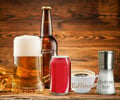





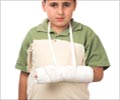




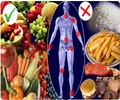
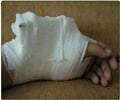

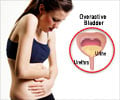

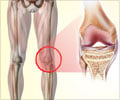

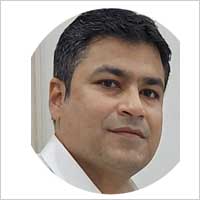


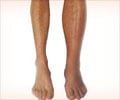


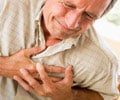

I have degenerative disc disease sciatica and major arthritis through out my whole body so bad I have to have my right handbook placed now I weigh 345 lb give or take so no surgeon will even touch me until I can lose weight but because I can't move around because the pain in my hips and my back and spine I can't exercise I can't even put my socks on the pain in my right hip is so bad I'm not sure if I arthritis is considered Osteoporosis or not however after looking at how simplistic and generic these tests are o can absolutely say i think they are set up to cause you some worry hoping to get you to contact their pop up Dr's